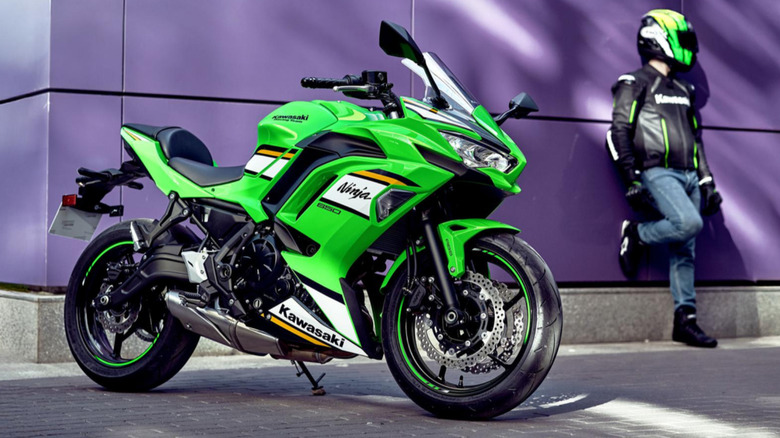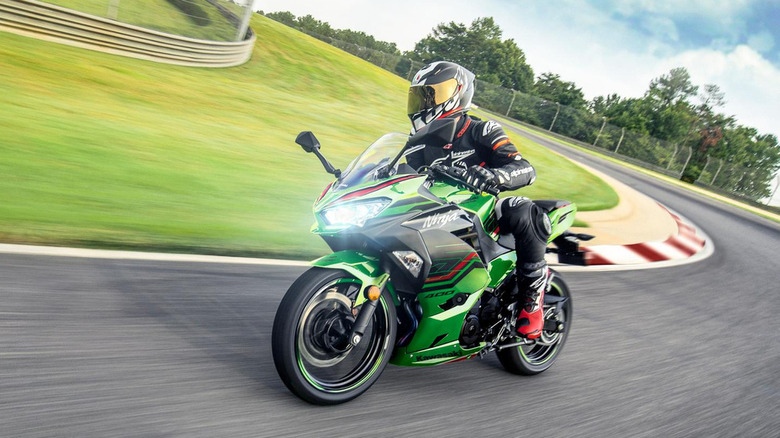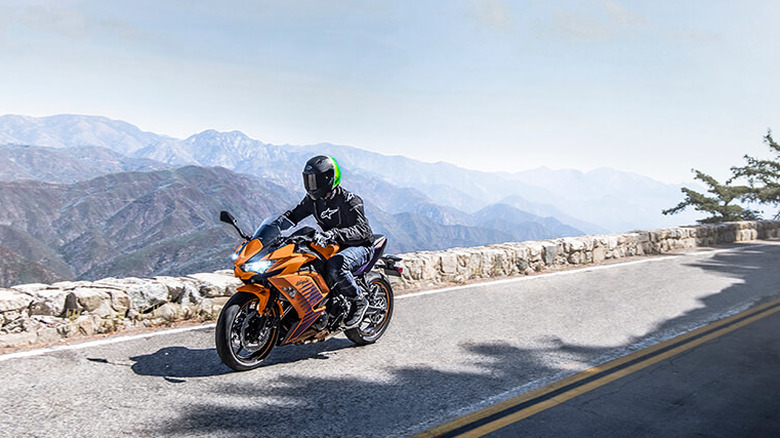Kawasaki Ninja 400 Vs 650: What Are The Differences Between These Motorcycles?
The Kawasaki Ninja lineup is one of the most iconic sportbike series of all time, with over 40 years of legacy. Riders love its no-nonsense, performance-driven approach, bulletproof reliability, and a comprehensive lineup that covers nearly every segment in the market. Two of Kawasaki's standout models include the entry-level Ninja 400 and the mid-range Ninja 650.
At first glance, they appear to be cut from the same cloth: Both follow a similar design philosophy, feature a twin-cylinder engine, and share the same aggressive styling. They are designed for sporty, everyday riding, with the ability to hold their own on the track. However, that's where the similarities end.
The smaller and lighter Ninja 400, weighing just 371 pounds, is widely regarded as one of the best beginner-friendly bikes, praised for its nimble and agile handling. The larger and more powerful Ninja 650 steps up the game with significantly more performance, tipping the scales at 421 pounds. It's better suited to more experienced riders, offering improved comfort and braking capability. While the Ninja 400 sits slightly lower at 30.9 inches, the 650 isn't far off with a seat height of 31.1 inches; nearly identical.
A closer look at the performance of both Kawasaki bikes
Naturally, the bigger, more powerful Ninja 650 delivers quicker performance. It reaches a top speed of around 130 mph; courtesy of its 649cc parallel-twin engine, which puts out 68 horsepower and 48 pound-feet of torque. Meanwhile, the Ninja 400 is no slouch either, capable of hitting 118 mph. Its 399cc parallel twin produces a segment-leading 48 horsepower and 37 pound-feet of torque.
Kawasaki does not publish its own official 0-60 times, but when it comes to acceleration, the Ninja 650 sprints from 0-60 mph in just 3.53 seconds, according to Motostatz. The Ninja 400 completes the same sprint in a respectable 4.07 seconds. One area where the Ninja 400 has an edge is its rev-happy character. It revs all the way to 13,000 rpm and makes peak power at 10,000 rpm.
In contrast, the Ninja 650 redlines at 9,500 rpm, with peak power arriving at 8,000 rpm. Many riders enjoy the high-revving nature of the Ninja 400, which adds to its engaging feel. Both bikes, however, can easily cruise at highway speeds of 75 mph. That said, the Ninja 650 pulls ahead with added tech, including Kawasaki Traction Control (KRTC), a full-color TFT display, and Bluetooth connectivity; features that the Ninja 400 misses out on.
How much more for the 650?
Another key difference lies in pricing. The now-discontinued Ninja 400 is available in the used market for anywhere between $3,500 and $5,800, depending on its condition. At this price point, it offers value for budget-conscious riders. The Ninja 650, on the other hand, carries a premium: A brand-new model starts at a reduced starting price of $7,399 for the non-ABS version, while the ABS variant begins at $7,999. In the used market, Ninja 650s can range from $5,000 to $7,000, again depending on mileage and overall condition.
For many riders, the Ninja 400 makes more sense, especially when the price gap feels too large for the performance jump. But for those with more experience and the ability to handle the extra weight or want the extra power and tech, the Ninja 650 offers a solid introduction to the middleweight segment. Its competitors, like the Yamaha R7, Aprilia RS 660, and Honda CBR650R, offer more performance but come at a higher price, often approaching the $10,000 mark.


